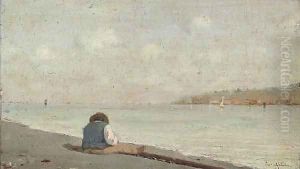Ferdinando Ruggieri Paintings
Ferdinando Ruggieri was an Italian architect, who is most commonly associated with the Baroque architecture that characterizes much of Florence's urban landscape. Born in 1691 in Florence, his work contributed significantly to the architectural heritage of the city during the early 18th century.
Ruggieri was trained under the prominent Florentine architect Giovanni Battista Foggini, who was the leading Baroque architect in Florence and the court architect to the Medici grand dukes. Under Foggini's guidance, Ruggieri honed his skills and developed a style that, while influenced by his mentor, had its own distinctive characteristics.
Ruggieri's architectural works are known for their elaborate decorative elements and the integration of classical motifs with the dynamism of Baroque art. He was adept at both religious and secular architecture, designing churches, villas, and palaces that reflected the grandeur and opulence of the period. One of his most notable designs is the façade of the Church of San Firenze in Florence, which shows his skillful handling of the Baroque language and his ability to adapt it to the Florentine context, characterized by a more restrained elegance.
Throughout his career, Ruggieri also contributed to the urban planning of Florence, designing several buildings that are still prominent in the city's streetscape. His work on the Palazzo Pandolfini and the Palazzo Viviani della Robbia are examples of his residential architecture, which combined functionality with aesthetic appeal.
Ruggieri continued to work in Florence until his death in 1741. His architectural legacy left a lasting imprint on the cityscape and his works continue to be studied and admired for their artistic and historical significance. Although not as widely known as some of his contemporaries, Ruggieri's contribution to Baroque architecture remains an important part of Florence's rich cultural heritage.
